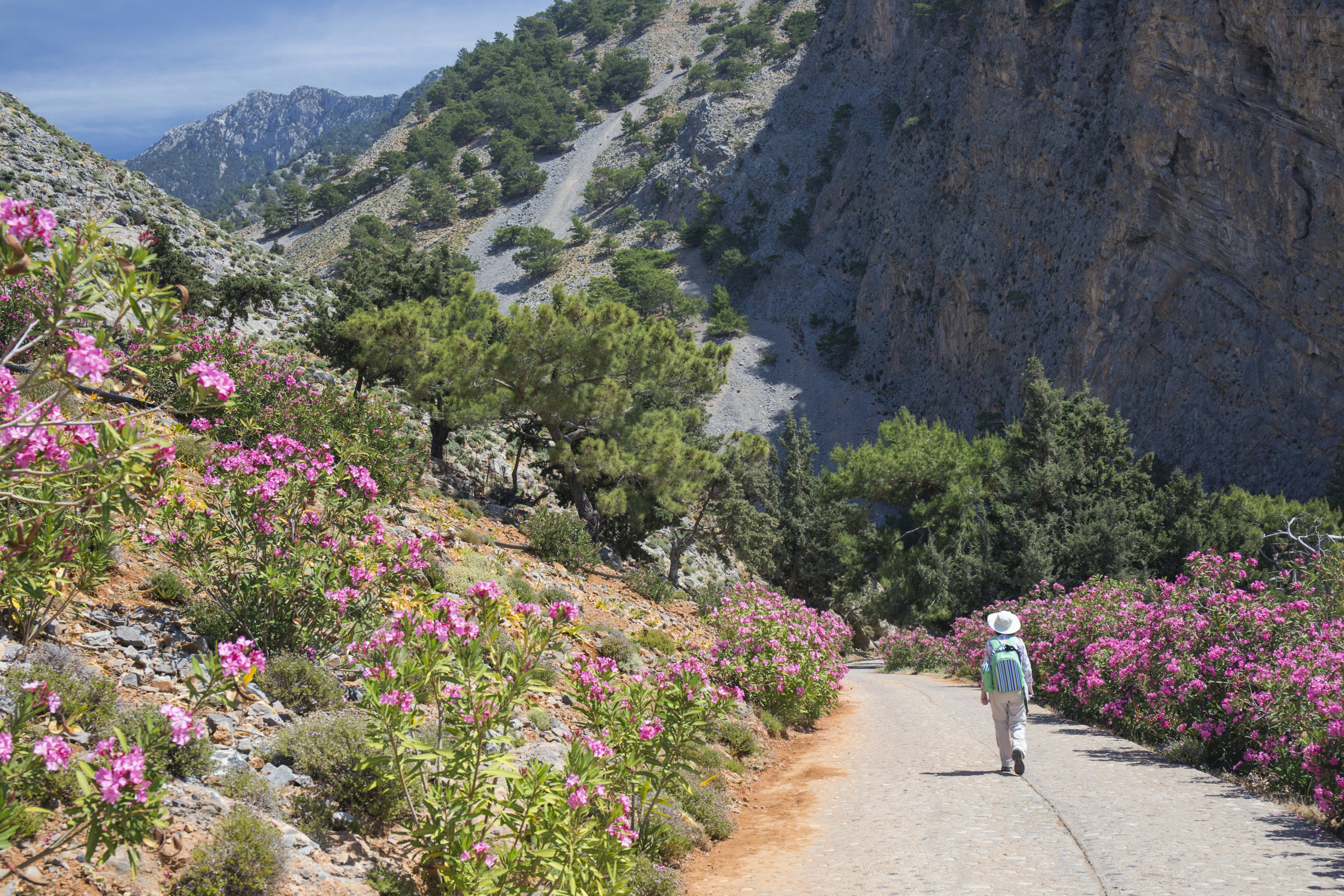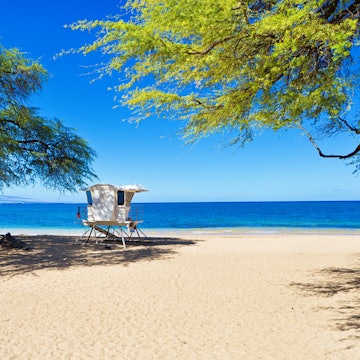

A windmill on the Lasithi Plateau in winter, Crete, Greece. Antonis Brt/Shutterstock
Think Crete, and you may think beaches packed with sunseekers lying out for hours.
You’ve got summer covered. But the island – with over 600,000 full-time residents – experiences all four seasons. In winter, things can get cold, windy and wet.
Accordingly, most sights and businesses set their annual schedules around the high summer season, and the warmest months usher in endless festivals and long nights on taverna terraces. Come winter, by contrast, much of the island is closed, with residents hunkered down indoors. In the spring shoulder season, things reopen, temperatures remain mild and crowds are moderate. This might be the sweet spot for a visit to this Greek island province.

Soak up the sun with countless others in the peak months of July and August
Everything is open in the highest days of high season, and wherever visitors gather, the party never seems to end. Midday temperatures are sweaty – with an average high of 29ºC (84ºF) – and rain is rare, but Mediterranean breezes offer temperate relief. Book everything far in advance as flights and hotels fill up quickly.
This is also peak festival season, and it seems like every town, no matter how tiny, plans something special during August. And everything comes to a halt on August 15 for the Feast of the Assumption: families reunite, the roads are clogged and businesses close. In Iraklio, the Summer Arts Festival runs from July to mid-September and features top classical music, dance, art, films and more.

Delightful weather and fewer crowds await in shoulder season (April to June, September and October)
Most businesses and attractions are open before and after the peak-summer months, which means you can rent a beach umbrella, enjoy a seaside taverna lunch and visit a remote church on a mountain pass – but without the hordes. Prices are moderate and the availability of flights and rooms is good; you may even find last-minute deals. Daily highs range from 20ºC to 27ºC (68ºF to 80ºF) depending on your proximity to summer.
In April, Orthodox Easter (which falls on a changing date that's different from Catholic Easter) is the most important religious date in a nation that takes its religious dates very seriously. Good Friday features massive processions, often accompanied by a blessing of the boats in coastal towns. At midnight on Easter Saturday, fireworks light up the sky in every town, large and small. This is followed by a late-night feast of roast lamb and other iconic Greek dishes. In Crete, residents love to invite visitors to join the celebrations.
Beachside tavernas, cafes and clubs begin opening right after Orthodox Easter, when the air – especially along hiking trails – becomes redolent with the verdant spring scents of sage, thyme, rosemary and other wild herbs. In June, all beaches fully open, with the water rapidly warming. Businesses still have a gloss from winter renovations.
September is a fabulous month for beachgoing (if you’re not traveling with kids, that is), as the water is still warm after the new school year begins. Beach businesses start to close in October – though most churches and museums are open, and you can hit the hiking trails with less worry about heatstroke.

You’ll have the beaches to yourself during the low season (November to March)
Because almost every tourist-focused business is closed, finding accommodation becomes harder in the low-season months. Yet winter in Crete has its charms, as waves pound desolate beaches and most Cretans prefer the comforts of a well-stoked fire. (Note that the world-class ruins at Knossos are open year-round.) The weather is cool to cold, with average highs of 15ºC (59ºF), and frequent storms bring rain and chilly winds for days on end. In the coldest weeks, snow often dusts the island’s tallest peaks.
November brings the season of raki, a fiery spirit that’s the national drink of Crete and an island-wide symbol of hospitality. It’s made from the mush left over from the wine harvest, and fresh batches issue forth from producers large and small all month. Christmas is generally low-key and cozy in Crete, with some seaside villages delightfully observing the holiday the traditional way: by decorating fishing boats.
A winter highlight is Carnival, three pre-Lent weeks of masquerade balls, street parties, treasure hunts and more. The final Sunday sees spectacular parades that devolve into mass frivolity. Rethymno has the wildest scene.














